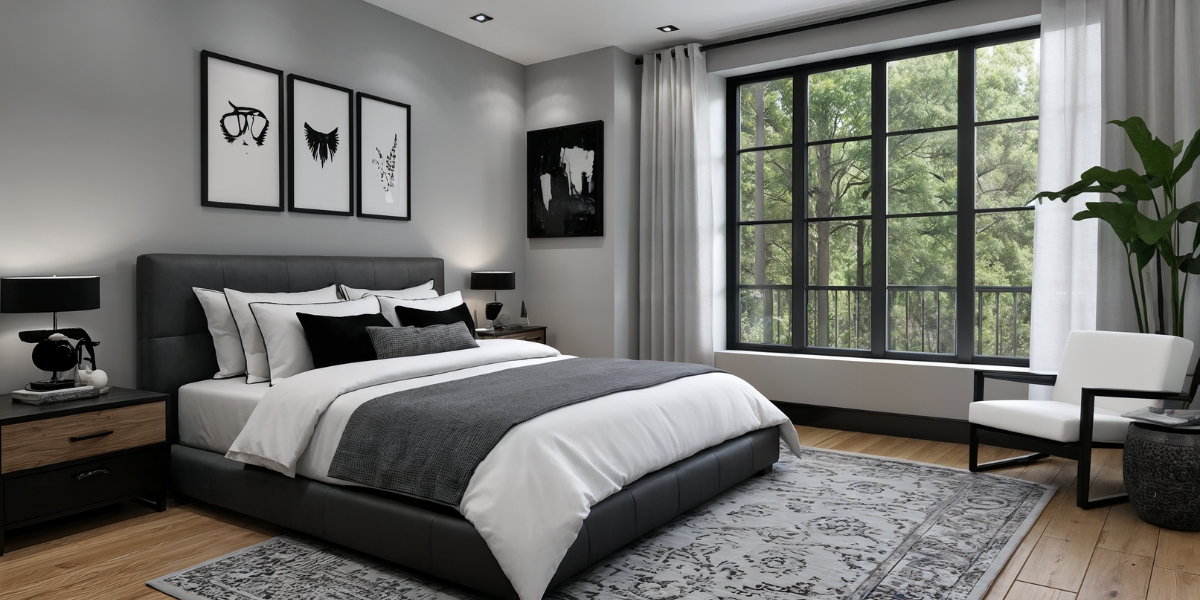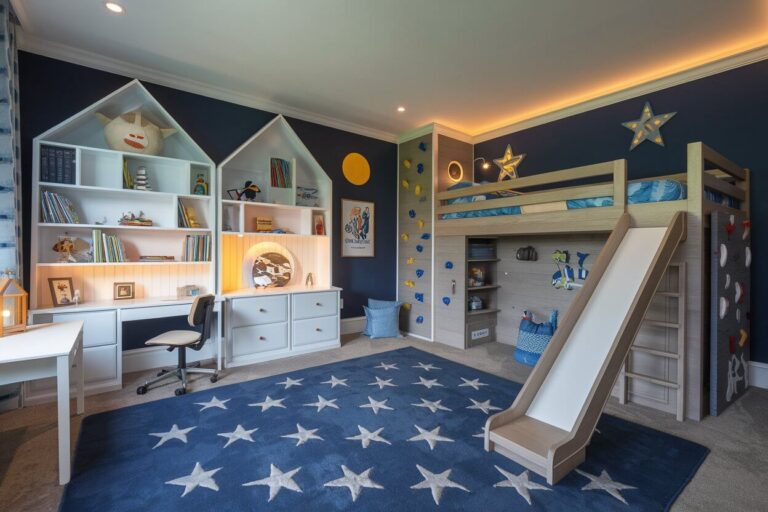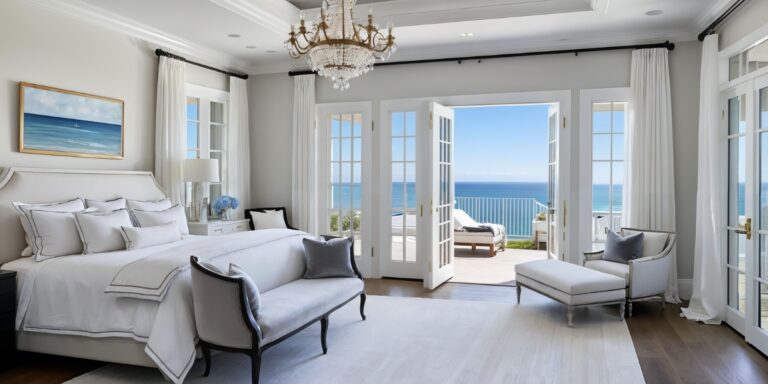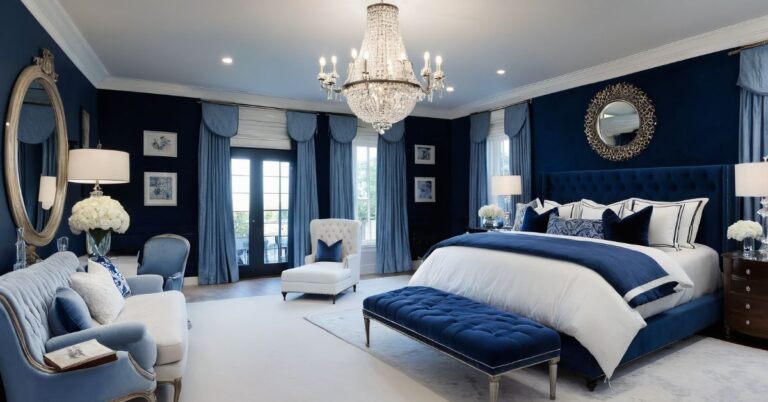In my experience working with homeowners on small bedroom renovations, I’ve observed that minimalist design often provides the most effective solution for compact spaces. Through various projects, I’ve learned that this approach typically balances style, comfort, and functionality while creating rooms that feel larger and more organized than their actual square footage.
Note: For any electrical work, built-in installations, or structural modifications mentioned in this article, always consult with licensed professionals to ensure safety and code compliance.
What makes minimalist bedroom design particularly effective in small spaces is its emphasis on simplicity, clean lines, and thoughtful organization. I’ve found that homeowners often choose this approach because it typically eliminates visual clutter while maximizing both storage and floor space.
The key to successful minimalist bedroom design often lies in selecting multi-functional elements and maintaining a cohesive color palette. Effective designs typically prioritize quality over quantity while ensuring every item serves a practical purpose.
Here are 15 minimalist design ideas for small bedrooms that often work well in various home configurations, based on observations from numerous renovation projects.
1. Neutral Color Foundation: Calming Base
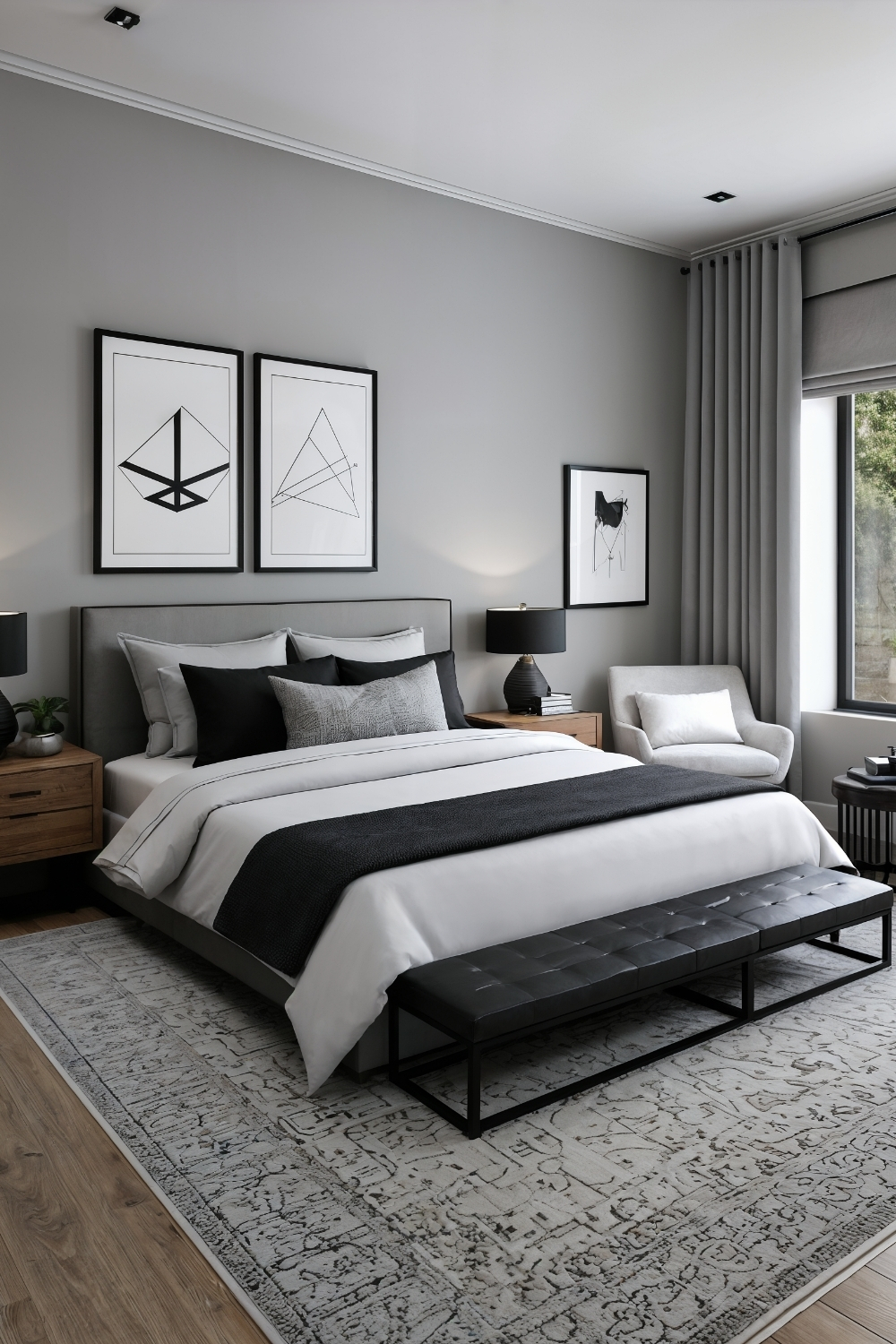
This color approach often appeals to homeowners seeking sophisticated, timeless aesthetics. Neutral palettes in grays, whites, and blacks with subtle earthy accents typically create calm atmospheres while making rooms feel more spacious.
Design consideration: Neutral colors often reflect light better than bold colors, while wood tones typically add warmth without overwhelming small spaces.
Practical benefit: Monochromatic schemes often create visual continuity that typically makes rooms appear larger while providing versatile backdrops for future design changes.
2. Low Platform Bed Systems: Space-Maximizing Sleep Solutions
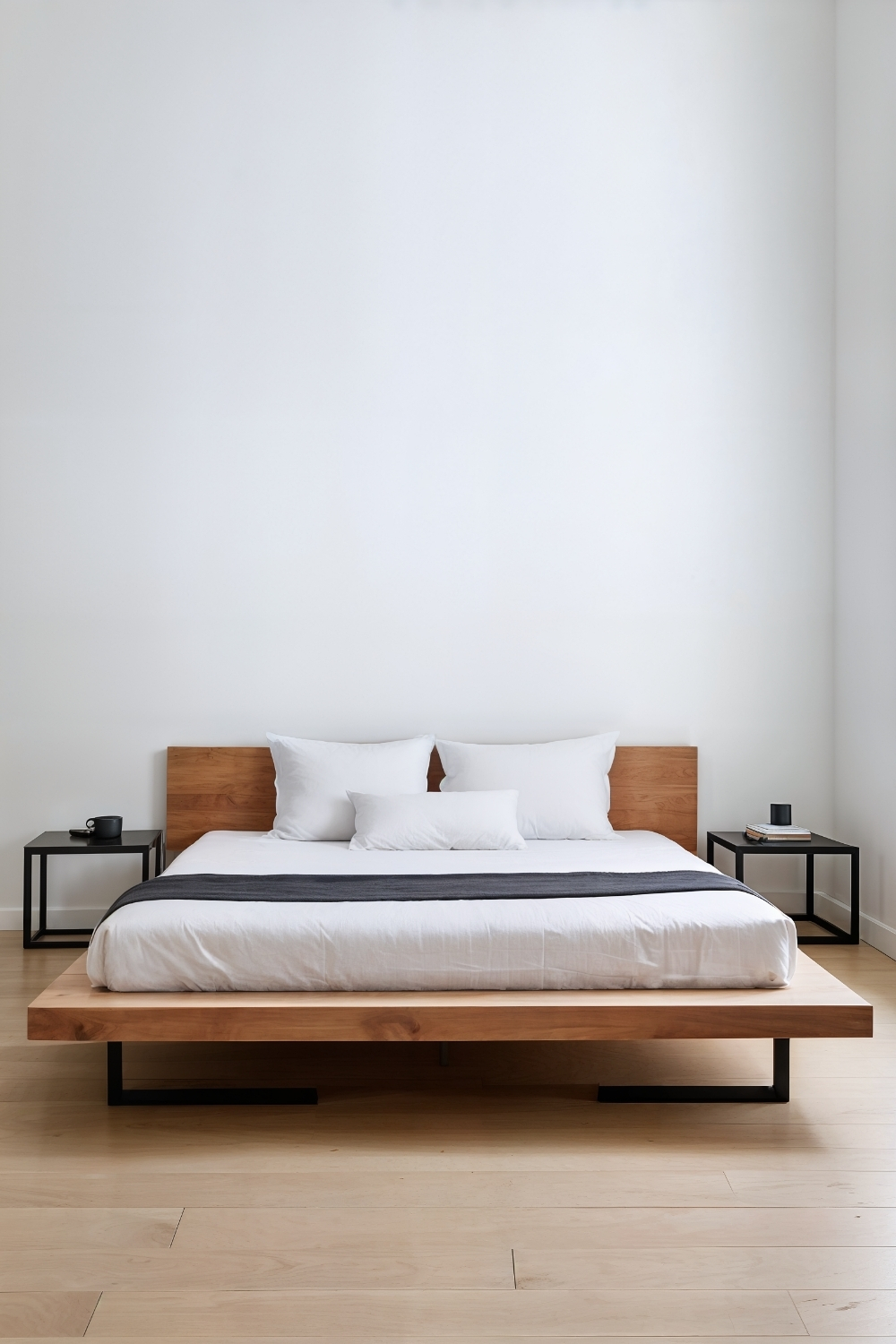
This furniture choice often appeals to homeowners wanting streamlined bedroom aesthetics. Low-profile platform beds typically create the illusion of higher ceilings while maintaining clean, contemporary lines.
Design consideration: Platform designs in wood, metal, or matte finishes often complement minimalist aesthetics, while frames with built-in storage typically maximize functionality.
Practical benefit: Lower bed profiles often make small rooms feel more spacious, while integrated storage typically eliminates the need for additional furniture pieces.
3. Wall-Mounted Lighting: Space-Saving Illumination
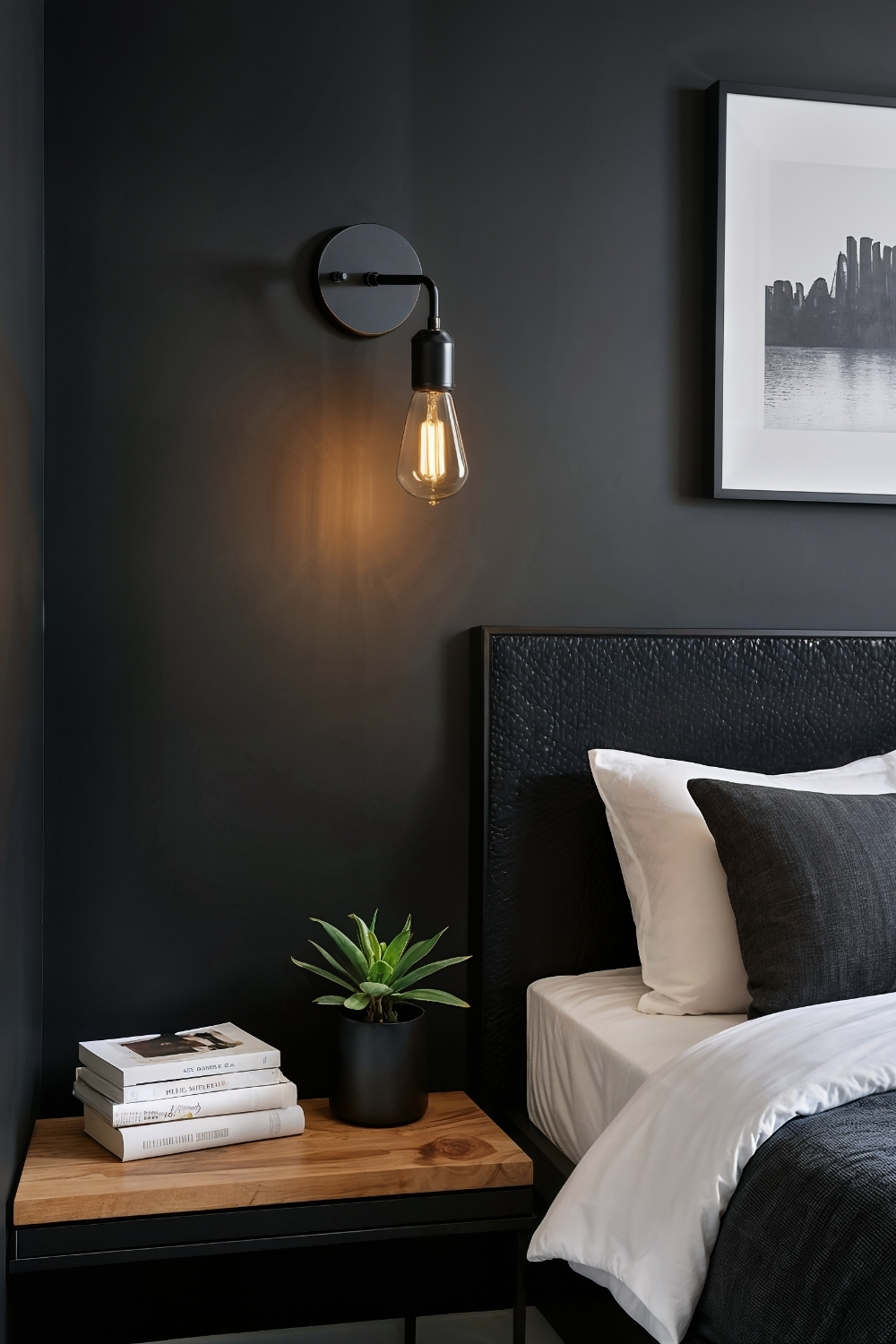
This lighting approach often appeals to homeowners maximizing nightstand space. Wall-mounted sconces or pendant lights typically provide necessary illumination while freeing up valuable surface areas.
Design consideration: Simple, geometric designs in metallic or matte finishes often complement minimalist aesthetics, while dimmable options typically offer mood flexibility.
Practical benefit: Wall mounting often eliminates bulky table lamps, while cord management typically creates cleaner sight lines throughout the space.
4. Multi-Functional Furniture: Dual-Purpose Solutions
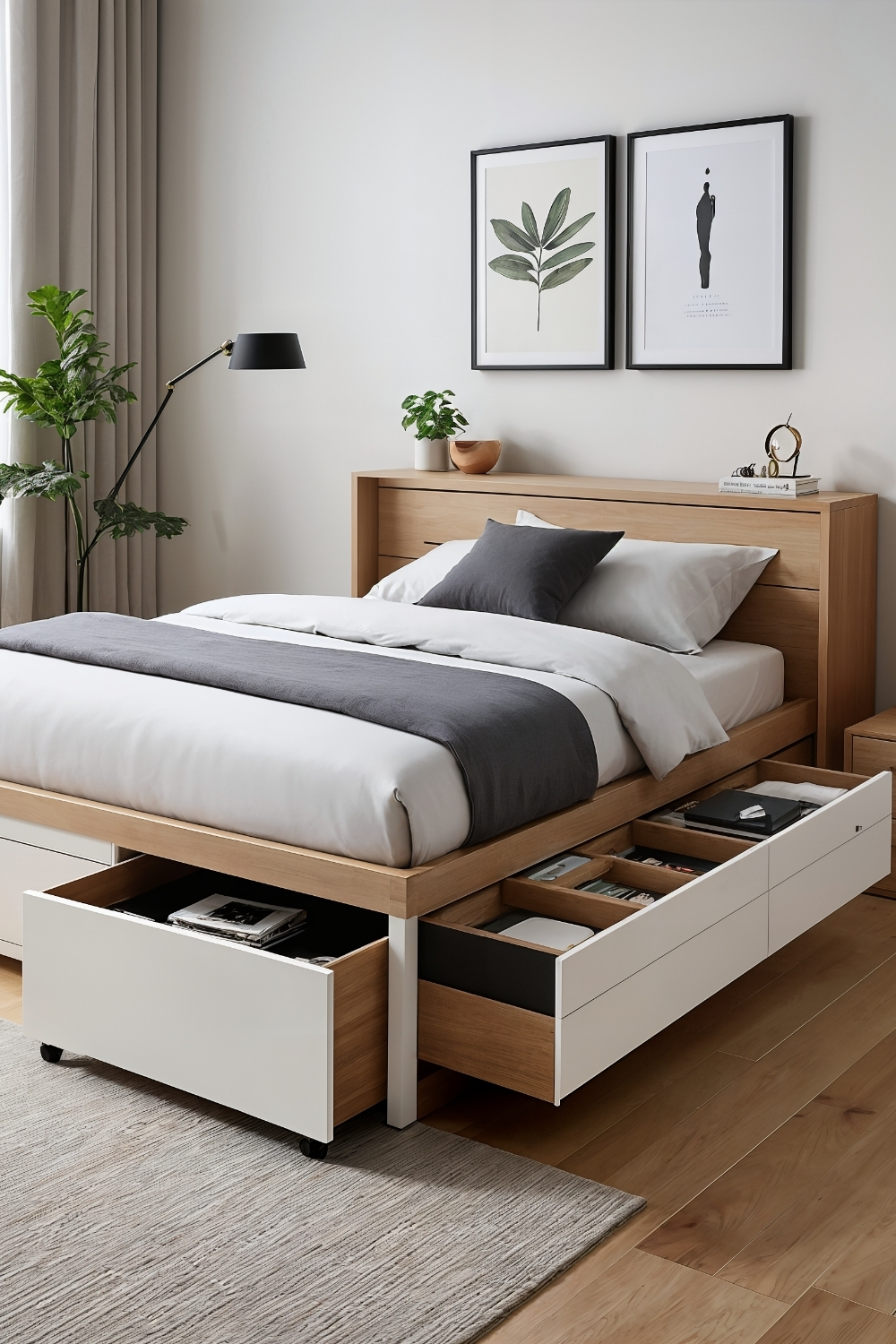
This furniture strategy often appeals to homeowners maximizing small-space efficiency. Multi-functional pieces like storage beds, convertible desks, or ottoman seating typically serve multiple needs while reducing overall furniture requirements.
Design consideration: Furniture with hidden compartments often maintains minimalist appearances while providing essential storage that typically keeps surfaces clutter-free.
Practical benefit: Dual-purpose pieces often reduce furniture costs while saving floor space that typically makes rooms feel more open and functional.
5. Built-In Storage Systems: Seamless Organization
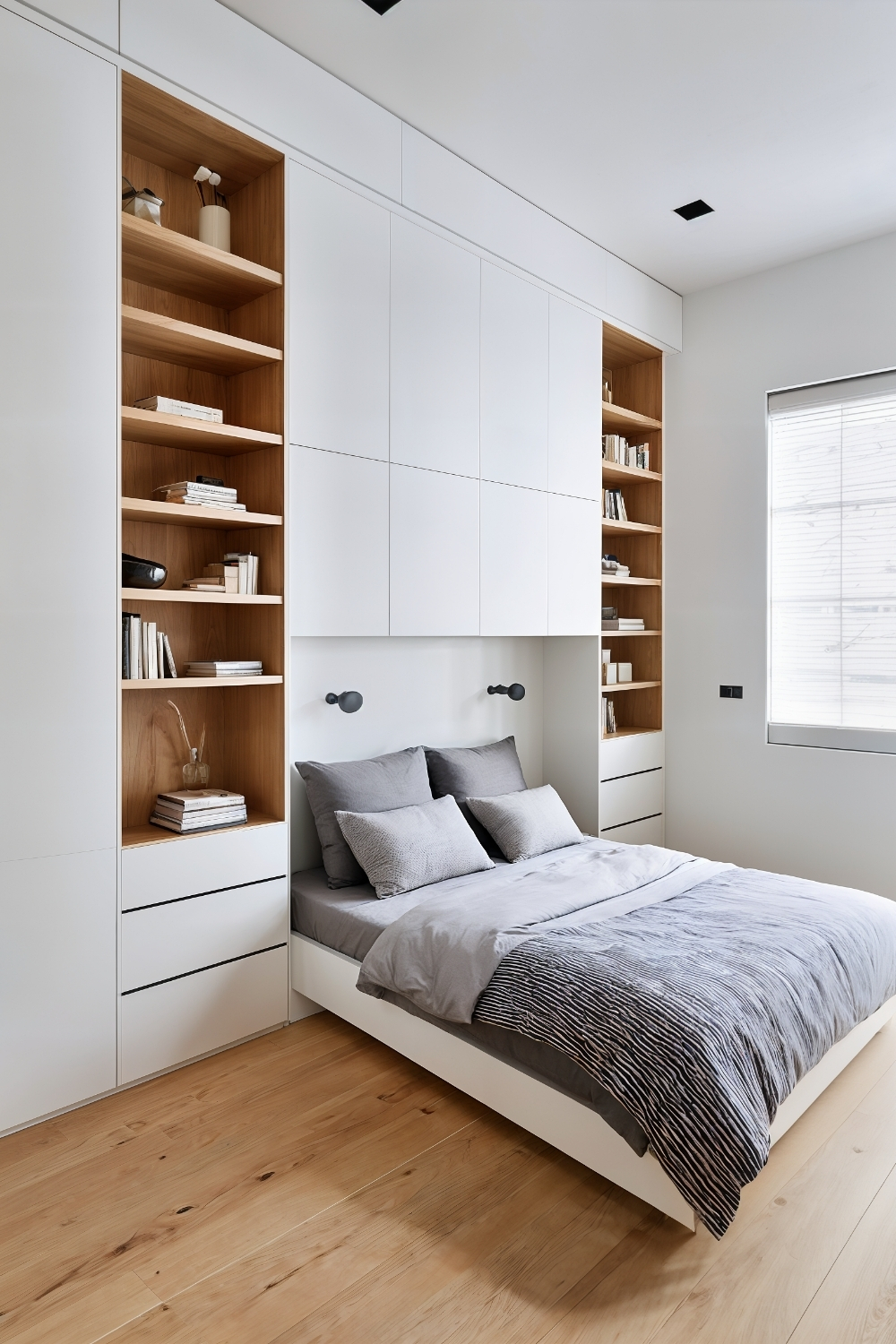
This storage approach often appeals to homeowners seeking custom organizational solutions. Built-in shelving or cabinetry typically maximizes every available inch while maintaining clean, integrated appearances.
Design consideration: Floor-to-ceiling installations often draw the eye upward, creating height illusions, while seamless integration typically maintains minimalist aesthetics.
Practical benefit: Custom built-ins often provide more storage capacity than freestanding furniture, while permanent installations typically add property value.
6. Floating Shelf Solutions: Minimalist Display Options
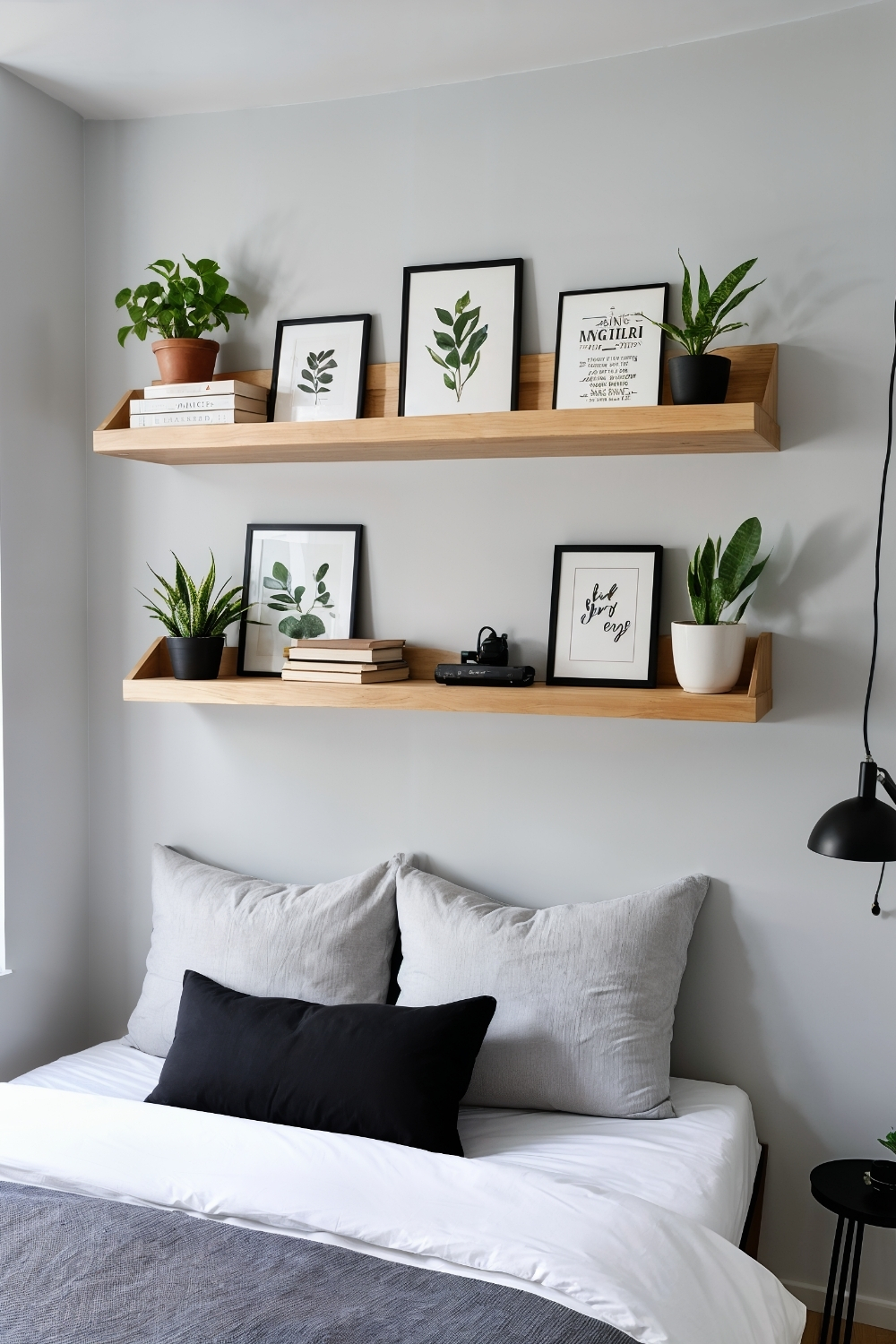
This storage method often appeals to homeowners wanting vertical storage without floor space sacrifice. Floating shelves typically provide display opportunities while maintaining visual lightness in small spaces.
Design consideration: Limited shelf styling often prevents visual clutter, while strategic placement typically draws attention to select decorative elements.
Practical benefit: Wall-mounted storage often preserves valuable floor space, while easy installation typically allows for flexible room arrangement changes.
7. Understated Art Selection: Subtle Personality Expression
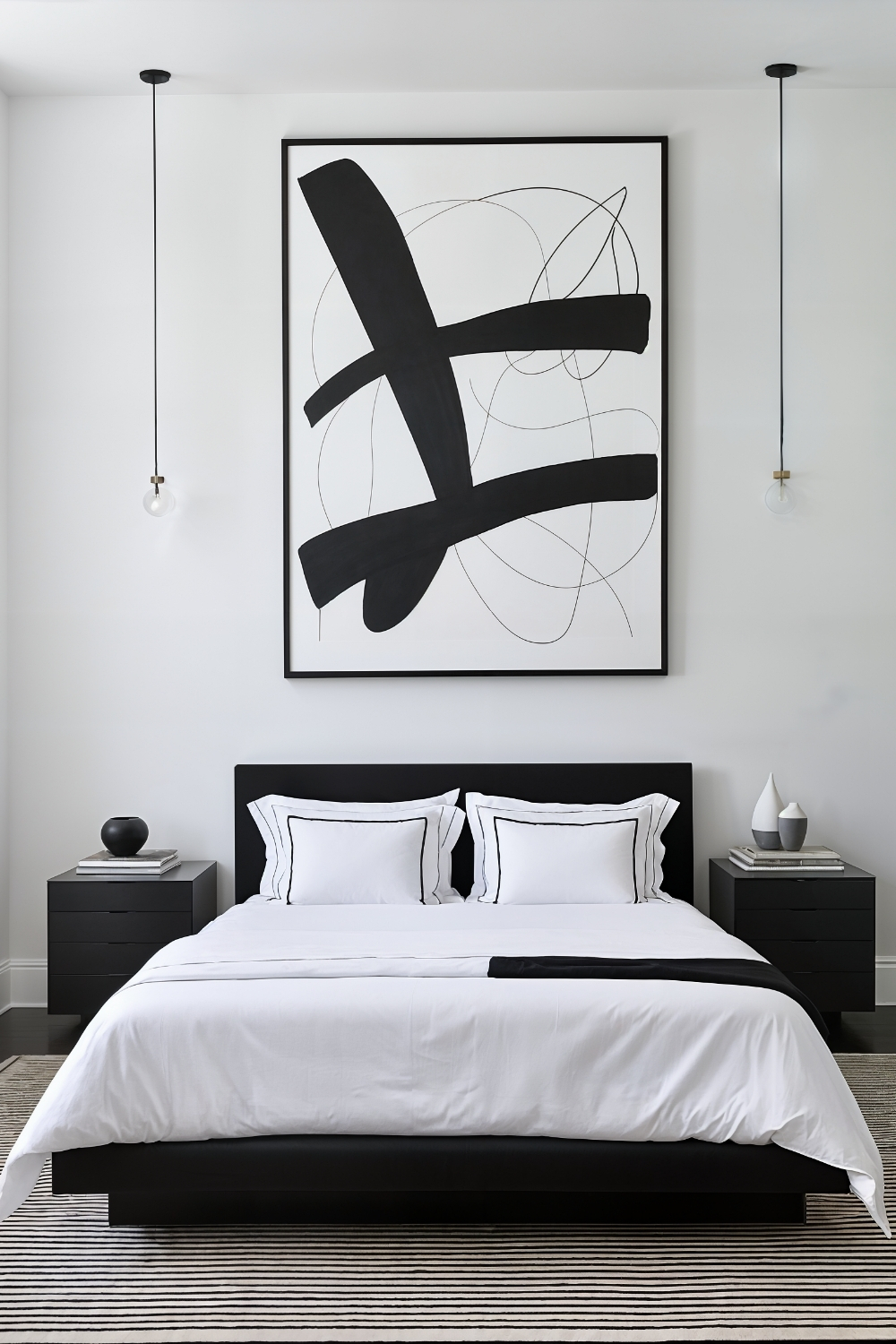
This decorative approach often appeals to homeowners wanting character without overwhelm. Carefully selected abstract art, monochromatic prints, or black-and-white photography typically adds personality while maintaining simplicity.
Design consideration: Simple frames in black or white often create cohesive appearances, while limited quantities typically prevent visual competition between pieces.
Practical benefit: Thoughtful art selection often personalizes spaces, while minimal quantities typically maintain the calm, uncluttered atmosphere essential to minimalist design.
8. Hidden Storage Integration: Concealed Organization
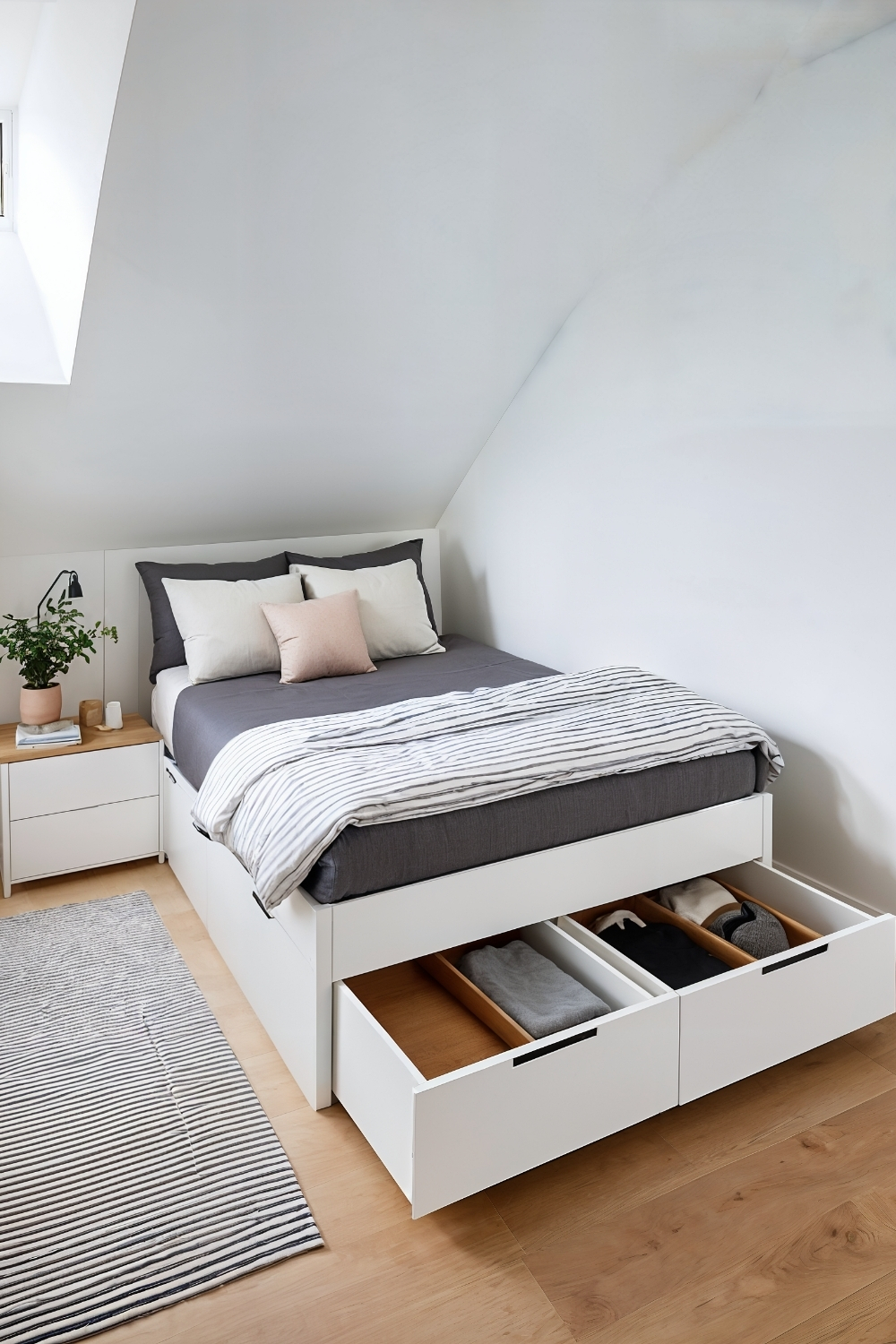
This organization strategy often appeals to homeowners maintaining clutter-free appearances. Hidden storage through ottomans, bed drawers, or concealed compartments typically keeps necessities accessible while invisible.
Design consideration: Storage baskets or organizers within closets often maintain order, while keeping surfaces clear typically preserves minimalist visual integrity.
Practical benefit: Concealed storage often maintains clean sight lines, while organizational systems typically make daily routines more efficient and stress-free.
9. Simplified Bedding Systems: Clean Sleep Aesthetics
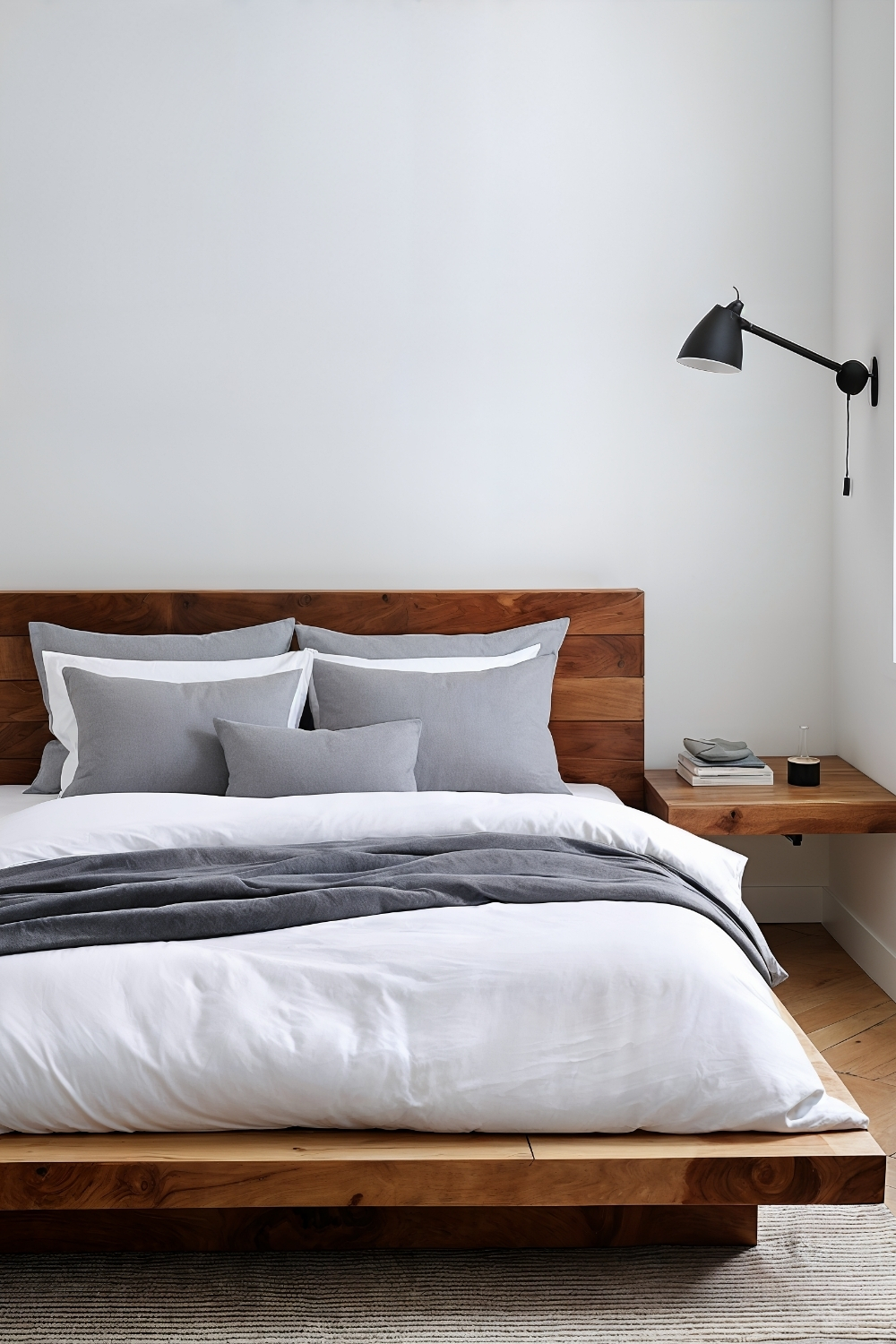
This textile approach often appeals to homeowners seeking sophisticated simplicity. High-quality bedding in neutral colors with minimal patterns typically creates serene sleep environments while maintaining visual calm.
Design consideration: Textured fabrics like linen or cotton often add subtle interest, while single pillow arrangements typically maintain neat, uncluttered appearances.
Practical benefit: Quality neutral bedding often ages better than trendy patterns, while simplified arrangements typically require less daily maintenance and styling.
10. Strategic Mirror Placement: Light and Space Enhancement
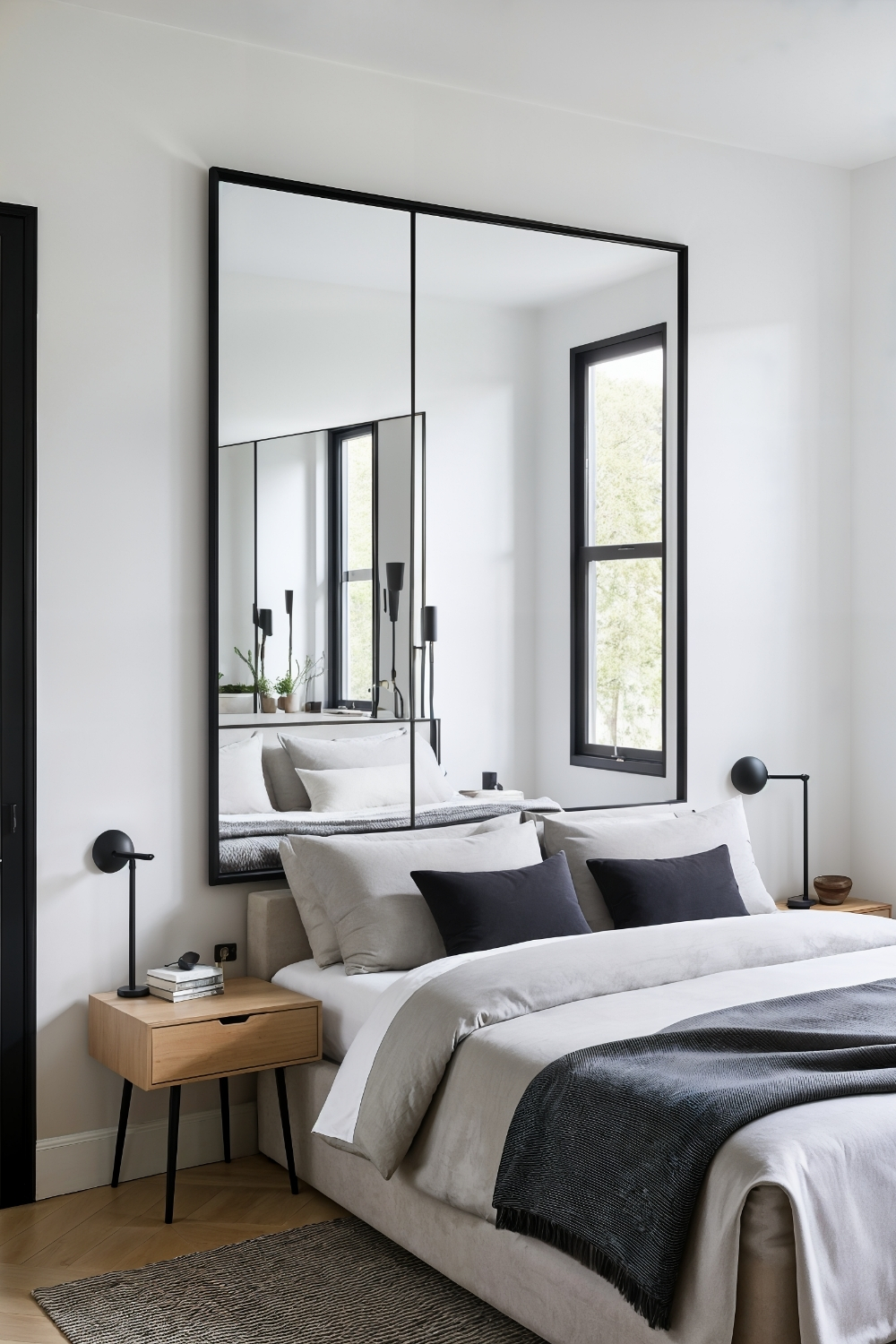
This design technique often appeals to homeowners maximizing natural light and visual space. Full-length or wall-mounted mirrors typically reflect light while creating depth illusions in compact rooms.
Design consideration: Frameless or thin-framed designs often align with minimalist principles, while placement opposite windows typically maximizes light reflection benefits.
Practical benefit: Mirror positioning often doubles natural light, while visual space expansion typically makes small rooms feel significantly more open and airy.
11. Streamlined Nightstand Selection: Essential Bedside Function
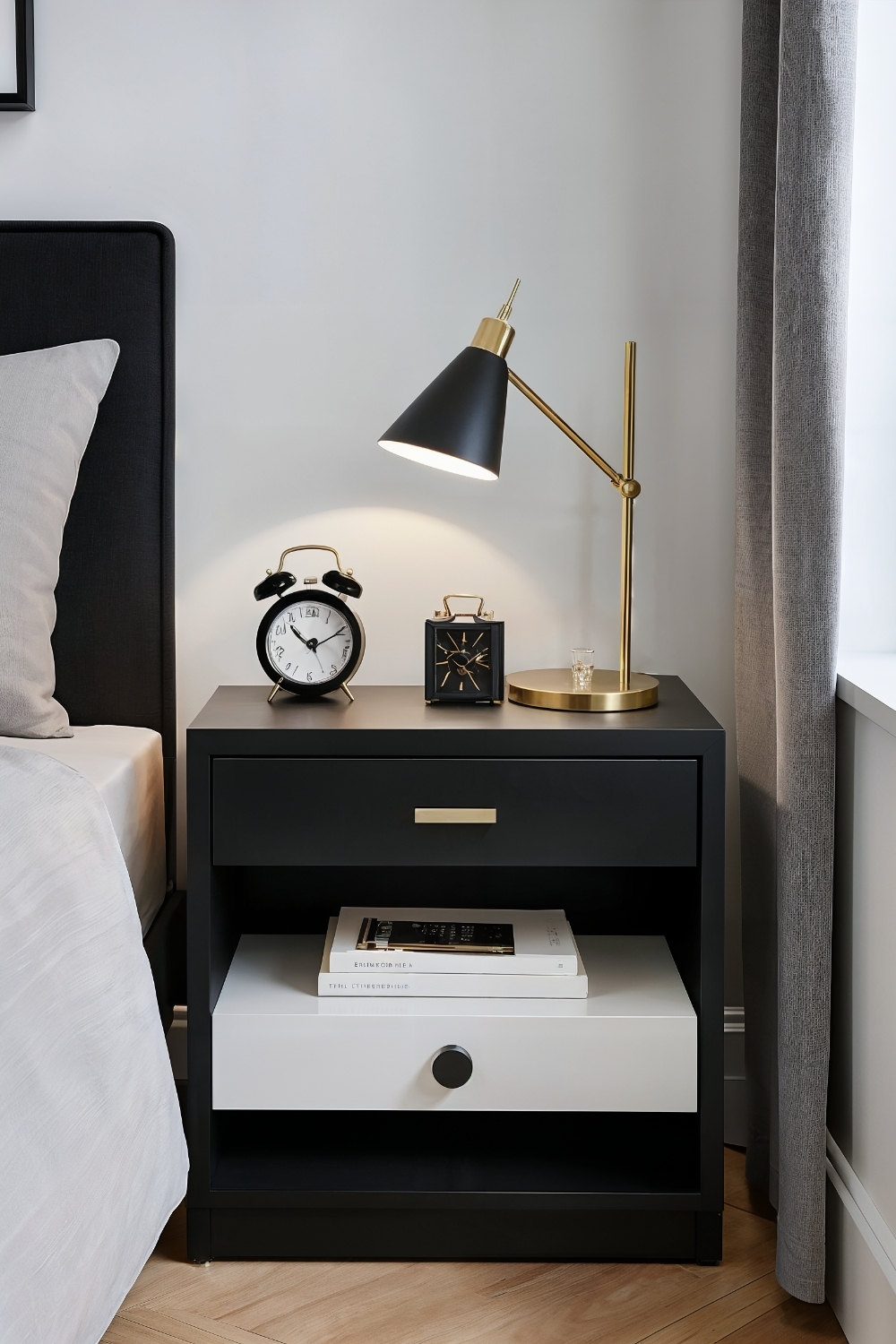
This furniture choice often appeals to homeowners wanting clean bedside organization. Minimalist nightstands with simple lines and limited storage typically provide necessary function without visual bulk.
Design consideration: Materials like wood, metal, or glass often complement various minimalist aesthetics, while limiting bedside accessories typically prevents surface clutter.
Practical benefit: Streamlined designs often fit better in tight spaces, while simplified styling typically makes daily organization routines more manageable.
12. Monochromatic Accent Integration: Cohesive Design Elements
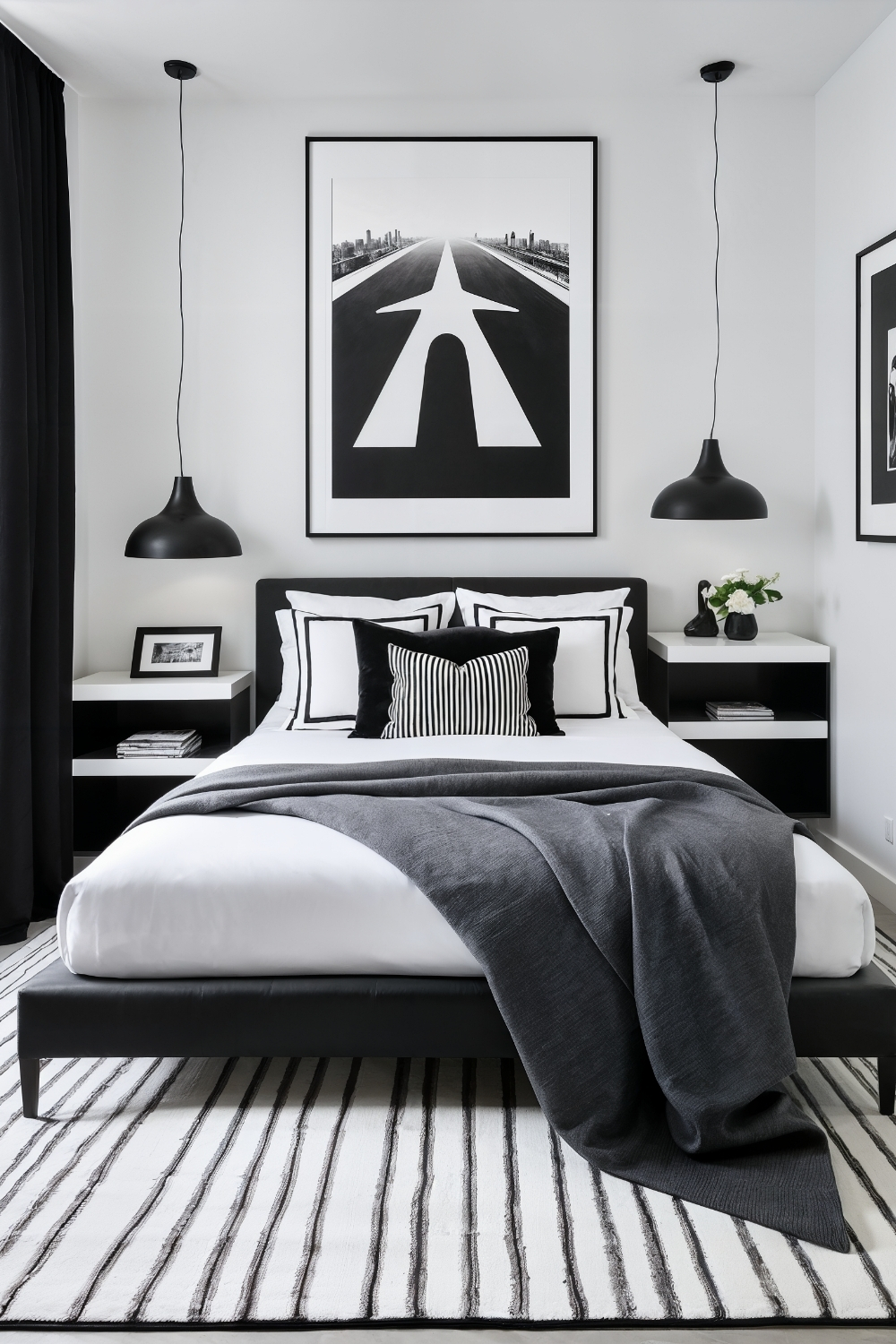
This color strategy often appeals to homeowners seeking sophisticated contrast. Black, white, and gray accents in lamps, clocks, or textiles typically add visual interest without creating color chaos.
Design consideration: Metal or leather textures often introduce masculine elements while maintaining simplicity, and limited color palettes typically create cohesive, calming environments.
Practical benefit: Monochromatic approaches often make accessory selection easier, while neutral schemes typically adapt well to seasonal or preference changes over time.
13. Window Treatment Simplification: Natural Light Maximization
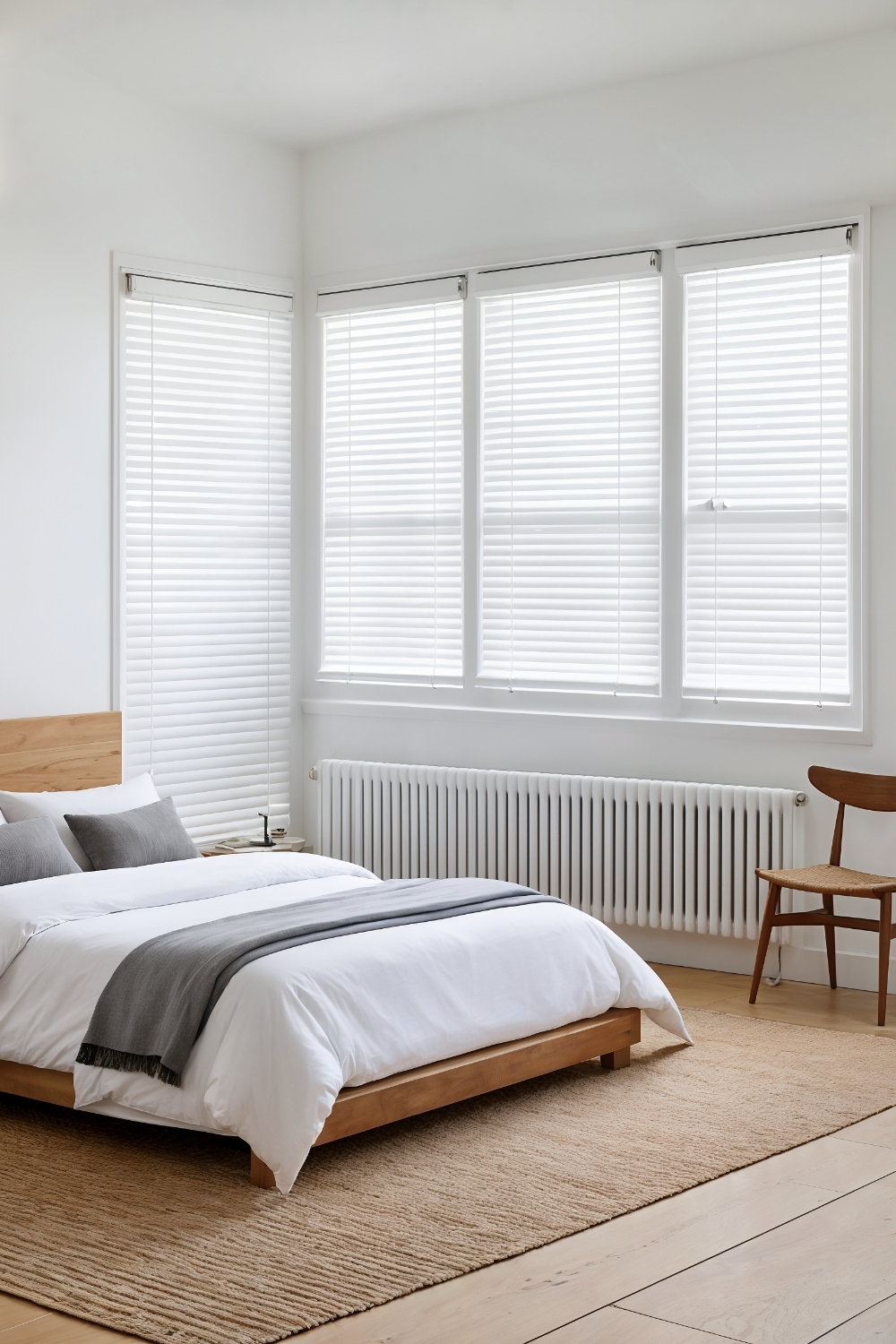
This design approach often appeals to homeowners prioritizing natural illumination. Minimal window treatments or bare windows typically maximize light, while simple blinds or sheer panels provide privacy when needed.
Design consideration: Avoiding heavy drapes or patterns often prevents visual weight, while neutral treatments typically maintain clean, uninterrupted sight lines.
Practical benefit: Simplified window treatments often require less maintenance, while maximum natural light typically reduces daytime artificial lighting needs and energy costs.
14. Minimalist Workspace Integration: Clean Work Areas
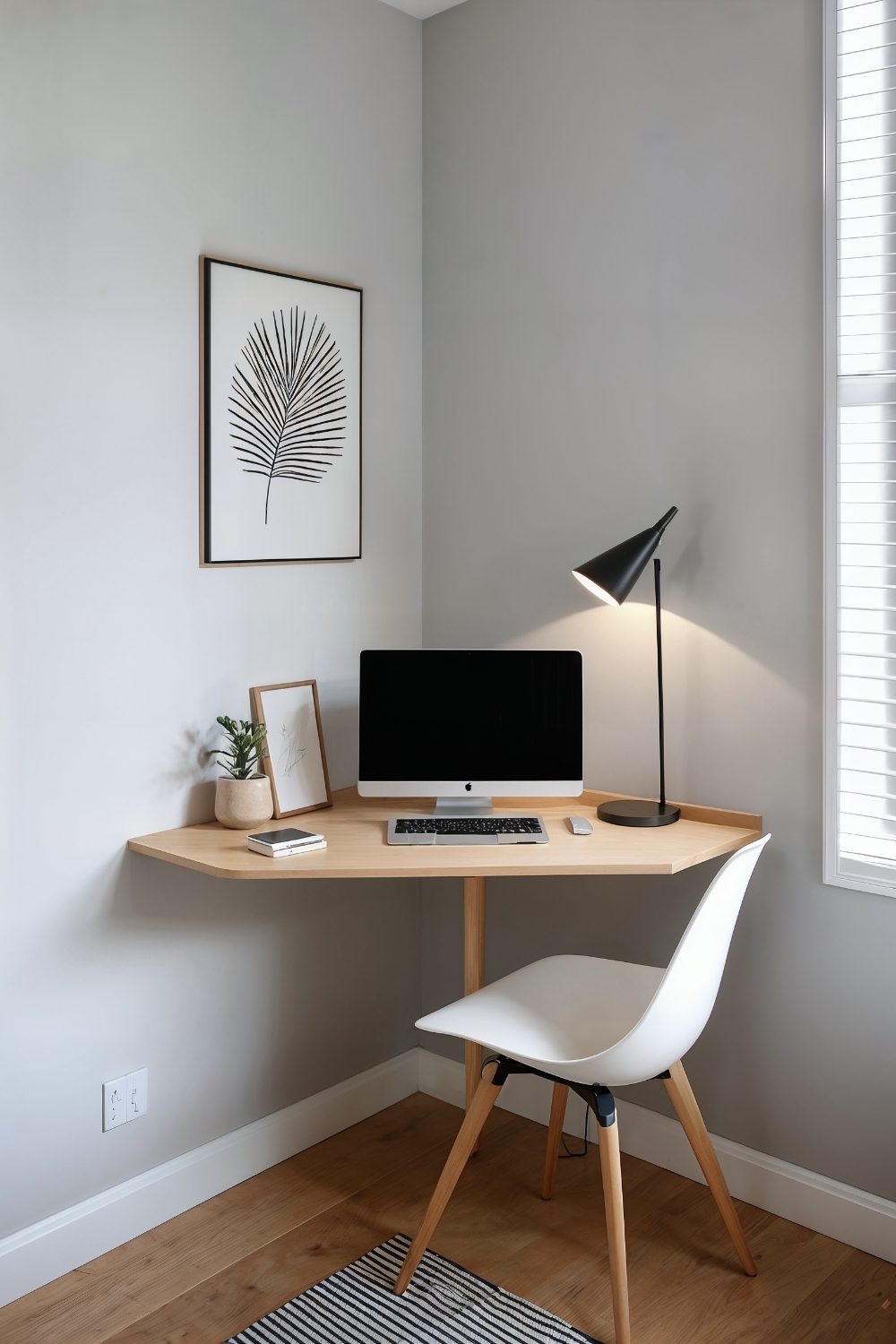
This furniture approach often appeals to homeowners needing bedroom workspace functionality. Slim, streamlined desks in wood or metal typically provide work surfaces while maintaining room aesthetics.
Design consideration: Cable management systems often maintain surface cleanliness, while avoiding excessive storage typically prevents visual bulk that can overwhelm small spaces.
Practical benefit: Integrated workspace often eliminates the need for separate office areas, while clean organization typically improves work focus and productivity.
15. Strategic Plant Placement: Natural Accent Elements
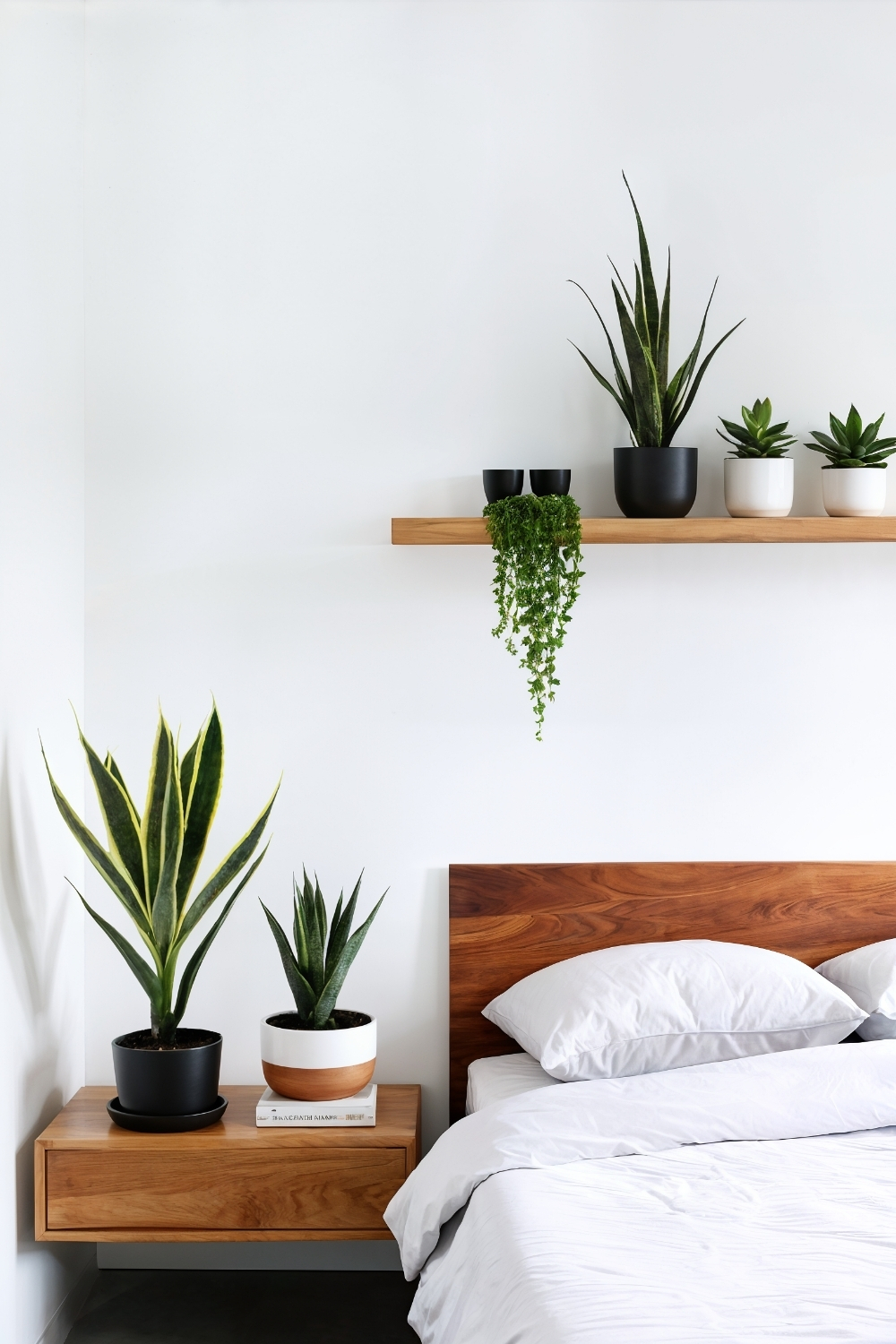
This decorative approach often appeals to homeowners wanting living elements without complexity. Low-maintenance plants like succulents in simple planters typically add natural warmth while requiring minimal care.
Design consideration: Window placement often maximizes growing success, while limiting quantities typically prevents surface clutter that can undermine minimalist principles.
Practical benefit: Living plants often improve air quality, while natural elements typically create psychological benefits without requiring significant maintenance time or expertise.
Creating Your Minimalist Small Bedroom
Understanding these design principles often helps homeowners transform compact bedrooms into serene, functional retreats. Effective minimalist implementations typically start with neutral color foundations and multi-functional furniture, then layer in thoughtful storage solutions and carefully selected accents.
Successful small bedroom projects often prioritize quality over quantity while ensuring every element serves both aesthetic and practical purposes. The result typically creates spaces that feel larger, more organized, and more restful than conventionally decorated rooms of similar size.
When planning your minimalist bedroom renovation, consider how these elements work together to eliminate visual clutter while maximizing functionality. The most effective designs often focus on creating clear sight lines and maintaining open floor space, which typically makes small rooms feel more spacious and calming.
Remember: For any built-in storage installations, electrical work for lighting systems, or structural modifications related to minimalist bedroom renovations, always consult with licensed professionals to ensure proper installation, safety, and local building code compliance.

